12 March 2009 | Author: Chip Taylor
There are several organizations concerned with monarch conservation and among these is the North American Pollinator Protection Campaign (NAPPC), a tri-national consortium of more than 90 affiliated organizations (pollinator researchers, conservation and environmental groups, private industry, and state and federal agencies) from Mexico, the United States, and Canada. The major goal of the NAPPC alliance is to develop and implement an action plan to “coordinate local, national, and international action projects in the areas of pollinator research, education and awareness, conservation and restoration, policies and practices, and special partnership initiatives; facilitate communication among stakeholders, build strategic coalitions, and leverage existing resources; and demonstrate a positive measurable impact on the populations and health of pollinating animals within five years.”
I have been a member of the NAPPC Steering Committee since its inception in 2001 and two years ago a Monarch Task Force was created to address issues associated with monarch conservation. The following document was crafted over the last few months by members of this task force with input from other monarch experts – contributors are mentioned at the end of the document.
Monarch Butterfly Conservation Talking Points
Monarch butterflies migrate to Mexico each fall from Canada and the United States to overwinter in forested areas in mountains west of Mexico City. This migration is truly spectacular and is one of the most magnificent and intriguing of all natural phenomena. The very existence of this migration is under threat due to illegal logging at the overwintering sites in Mexico and the loss of habitat due to development, land management practices and chemically-aided agriculture in the United States and Canada. These talking points further describe the value of the monarch migration, the benefits of conserving monarchs and the steps needed to conserve the monarch migration.
1. As the world’s most spectacular and conspicuous long distance insect migration, the monarch migration has scientific and cultural value and should be preserved.
Monarchs utilize a broad geographic range during their unique and spectacular annual migration. This trans-boundary species is threatened by habitat loss in all parts of their range in Mexico, the United States and Canada.
2. Conservation of monarchs will benefit pollinators and many other plants and animals.
Monarchs can serve as international and iconic representatives of all pollinators. Monarchs use resources common to a large number of pollinators, and the size of their population therefore reflects, in part, the health of the environment for pollinators in general. The security and stability of our food sources and ecosystems are dependent on healthy pollinator populations, and conserving monarchs will protect the habitats for an abundance of species.
3. Understanding the status of the monarch population will help us evaluate many ecological problems, including climate change.
Decreasing monarch numbers resulting from habitat loss indicates other ecological problems at local, regional and international levels. Thus, better understanding of monarch needs and factors that impact their populations can have broad environmental benefits. Because of our understanding of the climatic requirements for monarchs during their annual cycle of breeding, migrating and overwintering, changes in the timing and location of monarch life stages provide indicators of climate change. Recognizing the realities and manifestations of climate change will provide the basis for adaptive strategies designed to help maintain biodiversity and the integrity of ecosystems.
4. Many existing educational and conservation programs focused on monarchs are available and need additional audiences and support.
Government agencies and many non-governmental conservation and educational organizations in the United States, Mexico, and Canada are committed to supporting monarchs. Additionally, there are many opportunities for the public to engage in monarch research via several citizen science programs. All of these efforts need additional support to further engage the public, schools, nature centers, municipalities and government agencies in efforts to create habitats for monarchs.
5. Preservation of the monarch migration will require cooperative efforts to protect, restore and create monarch habitat.
Sustaining the monarch migration will require extensive efforts to educate the citizens and decision makers of Mexico, the United States and Canada of the value of the monarch migration and the necessity of protecting, restoring and creating monarch habitats. The cooperation of citizens, institutions, municipalities, government agencies and decision makers within these agencies will be enlisted in this effort. The North American Monarch Conservation Plan provides a blueprint for and commitment to action.
6. Financial and scientific support for monarch conservation is crucial.
In order for monarch conservation to succeed, we must increase our knowledge about monarch ecology and develop support for implementing research-based conservation measures. Funding is needed to support basic research on habitat restoration in different regions in each country. Also in need of funding are the educational, conservation and research programs focused on monarchs that are so critical in engaging the public and educating both the public and decision makers about the monarch migration. Of particular importance in the United States is better understanding of the distribution and abundance of milkweeds and nectar plants used by monarchs as well as knowledge of how to restore milkweeds to habitats from which they have been eliminated.
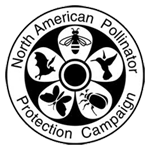 Monarch Task Force
Monarch Task Force
North American Pollinator Protection Campaign
Special thanks for the preparation of this document to Task Force Co-Chair Karen Oberhauser, Ph.D. University of Minnesota; Task Force Co-Chair Donita Cotter, US Fish and Wildlife Service; Chip Taylor, Ph.D. MonarchWatch; Kathie Christie, Pollinator Partnership; Robert Lamb, Pollinator Partnership; Brad Stirn, Pollinator Partnership; Larry Stritch, Ph.D., US Forest Service; Wayne Wehling, Ph.D., USDA APHIS; Harriet Crosby, Farview Foundation; Marietta Eaton, Bureau of Land Management, Lincoln Brower, Ph.D., Sweet Briar College, and Elizabeth Howard, Journey North.
Monarch Talking Points – 02/09 – NAPPC Monarch Task Force
www.nappc.org and www.pollinator.org or phone: (415)362-1137
A PDF version of this document is also available:
Monarch Butterfly Conservation Talking Points
Filed under Monarch Conservation | 2 Comments »
 It’s that time of year again!
It’s that time of year again!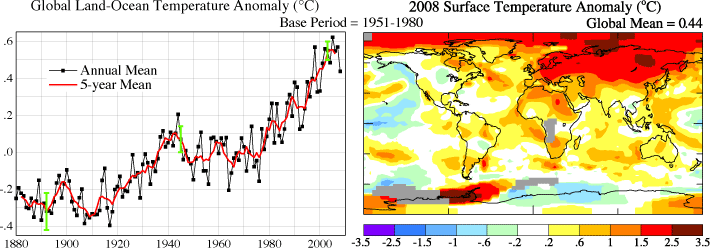
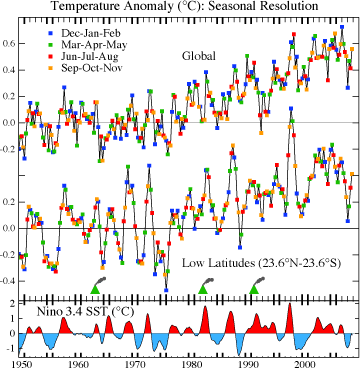
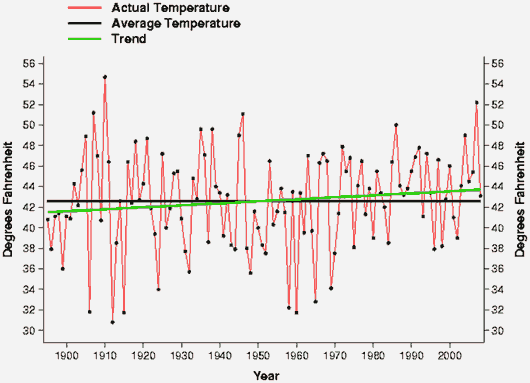
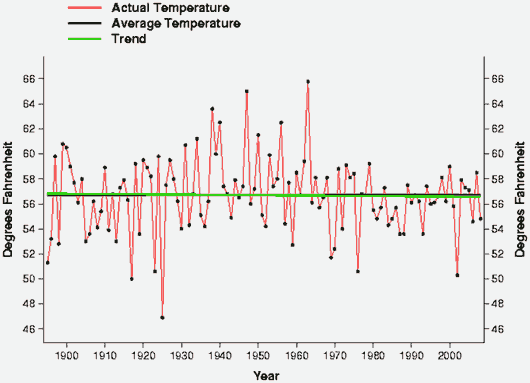
 We’ve posted a preliminary list of Monarch Watch tags recovered at the monarch overwintering sites in Mexico this spring. We are still proofreading this listing and will be revising and/or adding to it as we receive new information. As before, the records are ordered by tag code so that you can easily look for tags you have used:
We’ve posted a preliminary list of Monarch Watch tags recovered at the monarch overwintering sites in Mexico this spring. We are still proofreading this listing and will be revising and/or adding to it as we receive new information. As before, the records are ordered by tag code so that you can easily look for tags you have used:

 This term was new to many of you last year when I tried to recruit Monarch Watchers to observe and report the seasonal development of milkweeds and nectar plants used by monarchs. Phenology seems like a strange word and it is all too similar to the more familiar term – phrenology (the study of the bumps on people’s heads as a supposed indication of character and mental abilities). Phenology, on the other hand, is the study of the seasonal changes in plant and animal life brought about by increasing temperature in the spring. Recording the dates of phenophases, or stages, in the development of plants such as first emergence, first flowers, first fruits, is becoming an important means of assessing the impact of climate change. However, to be usefully applied to this end, the same data has to be recorded each year by many, many observers over broad areas of the continent.
This term was new to many of you last year when I tried to recruit Monarch Watchers to observe and report the seasonal development of milkweeds and nectar plants used by monarchs. Phenology seems like a strange word and it is all too similar to the more familiar term – phrenology (the study of the bumps on people’s heads as a supposed indication of character and mental abilities). Phenology, on the other hand, is the study of the seasonal changes in plant and animal life brought about by increasing temperature in the spring. Recording the dates of phenophases, or stages, in the development of plants such as first emergence, first flowers, first fruits, is becoming an important means of assessing the impact of climate change. However, to be usefully applied to this end, the same data has to be recorded each year by many, many observers over broad areas of the continent.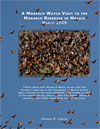 Some months ago Dennis Curtin, a writer of ebook instruction manuals on how to use specific cameras, contacted us concerning an ebook he is creating about monarchs. One communication and idea led to another as we discussed the development and marketing of his book. One of the book’s deficiencies at first draft was an absence of coverage of the overwintering monarch colonies in Mexico, and the obvious solution was to invite Denny, with his great camera skills, to join us on our March trip to Mexico. We learned a lot about Denny on this trip. Not only does he have a camera at hand most of the time, but he is a compulsive blogger. Each morning as I awoke I found him hunched over his computer punching out words with two fingers to capture the events of the previous day. Denny has compiled all of these daily jottings along with a kazillion photos into a journal describing the whole adventure:
Some months ago Dennis Curtin, a writer of ebook instruction manuals on how to use specific cameras, contacted us concerning an ebook he is creating about monarchs. One communication and idea led to another as we discussed the development and marketing of his book. One of the book’s deficiencies at first draft was an absence of coverage of the overwintering monarch colonies in Mexico, and the obvious solution was to invite Denny, with his great camera skills, to join us on our March trip to Mexico. We learned a lot about Denny on this trip. Not only does he have a camera at hand most of the time, but he is a compulsive blogger. Each morning as I awoke I found him hunched over his computer punching out words with two fingers to capture the events of the previous day. Denny has compiled all of these daily jottings along with a kazillion photos into a journal describing the whole adventure: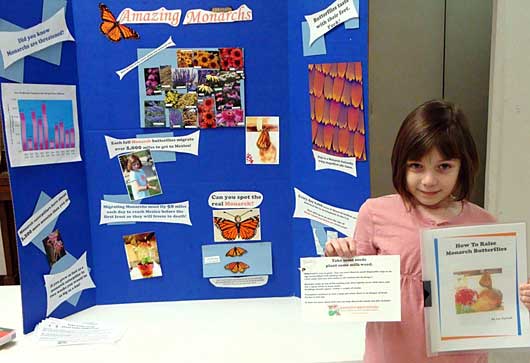
 Monarch Task Force
Monarch Task Force
